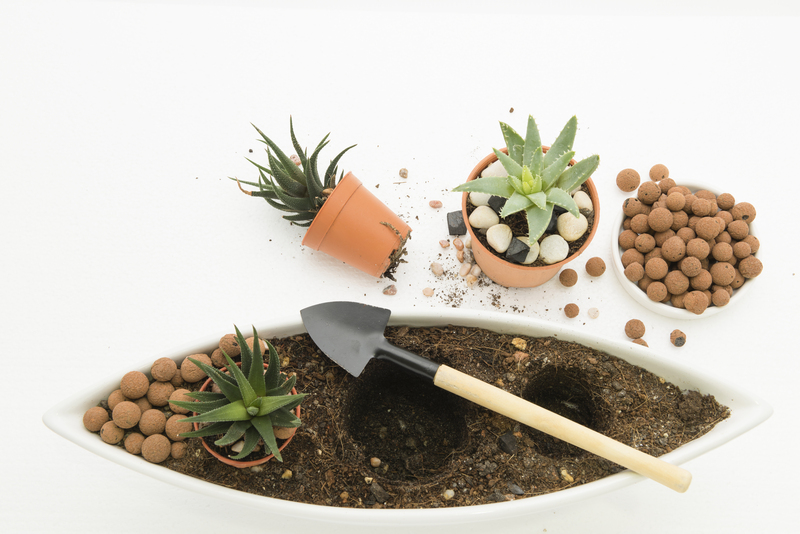Climbing to the Light: Evergreens in Shade
Posted on 23/05/2025
Climbing to the Light: Evergreens in Shade
When it comes to creating a lush and vibrant garden, the strategic use of evergreens can transform a dreary, shaded area into a serene landscape of sustained greenery. Evergreens are not just sun lovers; there are a variety of species that thrive in low light conditions. This article explores the best choices for evergreens in shade, offering insights into their maintenance and benefits. Let's dive into the enchanting world of shade-loving evergreens.
Why Choose Evergreens for Shaded Areas?
Evergreens are a popular choice for shaded gardens for several compelling reasons:
- Persistence of Greenery: Evergreens maintain their foliage year-round, providing continuous color and structure even in the bleakest winters.
- Variety of Forms: From dense shrubs to elegant trees, there is an evergreen to suit every space and design requirement.
- Low Maintenance: Many shade-tolerant evergreens require minimal upkeep once established, making them ideal for busy gardeners.
Key Considerations for Shade-Grown Evergreens
Before planting, it's crucial to understand your specific garden conditions to ensure the success of your evergreens:
- Soil Quality: Ensure that the soil is well-draining yet moisture-retentive since too much water can be harmful to even the hardiest of evergreens.
- Level of Shade: Different plants have varying thresholds of shade tolerance, ranging from partial to full shade.
- Climate Compatibility: Choose evergreens that are well-suited to your local climate to avoid stunted growth or susceptibility to disease.

Top Evergreens for Garden Shade
1. Boxwood (Buxus sempervirens)
Boxwood is a versatile evergreen shrub that thrives even in partial shade. Renowned for its dense, evergreen foliage, the boxwood is perfect for creating structured hedges or adding formality to a shaded garden bed.
- Growth Rate: Slow to moderate.
- Lighting: Prefers partial shade to full sun but tolerates shady locations.
- Soil Requirements: Thrives in well-drained soil that is slightly acidic to neutral.
2. English Ivy (Hedera helix)
While often viewed as a ground cover, English Ivy can climb structures, creating cascades of greenery. It prefers the quiet shadiness beneath trees or in the shadow of taller plants.
- Growth Habit: Vining, can become ground cover or climb.
- Shade Tolerance: Full to partial shade.
- Maintenance: Regular pruning to prevent invasive spread.
3. Yew (Taxus baccata)
The Yew tree is a stalwart of shaded gardens, respected for its stately form and adaptability. It offers a dignified presence when trimmed into formal shapes or allowed to grow naturally.
- Growth Rate: Slow, but worth the wait for its regal appearance.
- Sun Exposure: Thrives in shaded areas, tolerates partial sun.
- Soil Preference: Well-drained, light soils.
4. Evergreen Holly (Ilex aquifolium)
Known for its shiny, spiky leaves and bright red berries, which provide a festive touch in winter, the Evergreen Holly does well in varying shades from full sun to partial shade.
- Decorative Elements: Berries that attract birds.
- Optimal Light: Prefers partial shade to full sun but tolerates full shade.
- Pruning: Requires minimal trimming but may need shaping.

Caring for Shade Tolerant Evergreens
Once you have chosen the ideal evergreens for your site, proper care is essential to ensure they thrive:
- Watering: Ensure even moisture levels, particularly during dry spells. While drought-tolerant, deep watering encourages stronger root systems.
- Fertilization: Use a slow-release, balanced fertilizer in early spring to support new growth.
- Pruning: Regular trimming can maintain the desired shape and encourage a denser growth habit. Remove dead or diseased branches promptly.
- Mulching: A layer of mulch can conserve moisture, suppress weeds, and improve soil quality. Opt for organic options like bark or wood chips.
Addressing Common Challenges
Growing evergreens in the shade isn't always without its challenges. Common issues include:
- Poor Air Circulation: Dense shade and proximity of plants can impede air flow, leading to fungal diseases. Ensure plants are spaced properly to allow for good circulation.
- Pest Management: Regular check-ups can help in early detection and control of pests. Use natural predators or targeted sprays as a last resort.
- Nutrient Deficiency: Shade can lead to reduced nutrient uptake. Address deficiencies with tailored soil amendments and testing.
The Aesthetic Appeal of Shaded Evergreens
One of the most rewarding aspects of growing evergreens in shaded areas is the aesthetic versatility they bring to the garden:
- Texture and Color: Different foliage textures and shades of green can create visual interest and contrast.
- Seasonal Highlights: Some evergreens, like the Holly, also provide seasonal attractions such as berries, enhancing winter aesthetics.
- Structural Design: Evergreens can serve as borders, backdrops, or focal points, helping define garden zones and enhancing landscape architecture.
Conclusion
Incorporating evergreens into shaded sections of your garden can profoundly enhance its beauty and resilience. These hardy plants not only remain visually appealing throughout the year but also provide a crucial ecological niche. With thoughtful selection, planting, and care, your shade garden can become a tranquil retreat, rich in texture and life. Whether you are a seasoned gardener or a budding enthusiast, exploring the world of shade-loving evergreens opens new doors to creative landscaping possibilities. Remember, the journey to a flourishing garden begins with the right choices and dedication.

